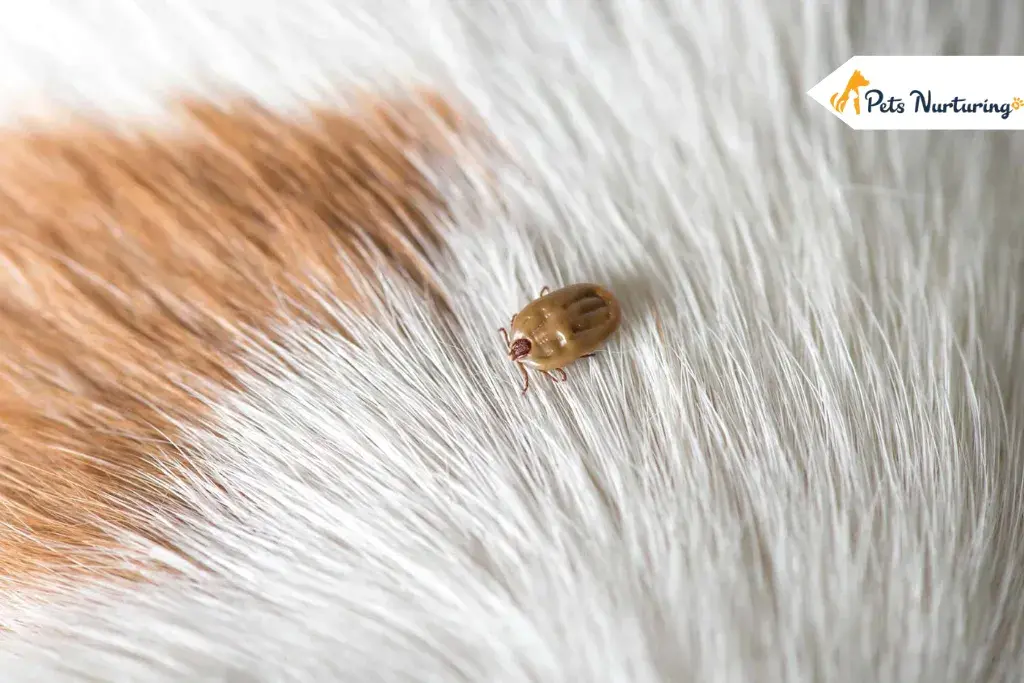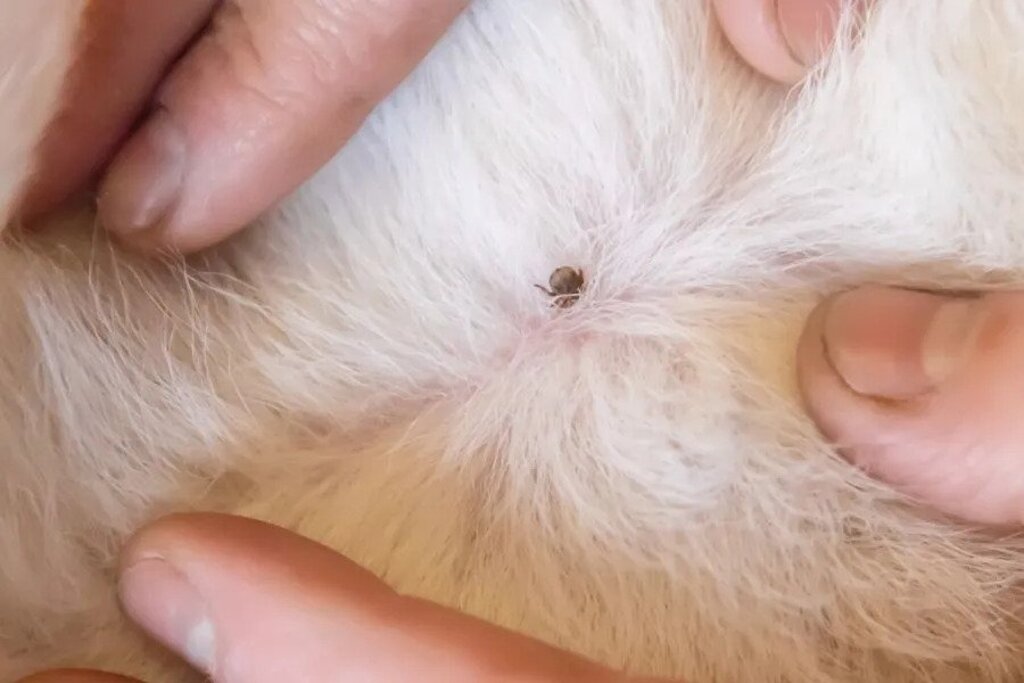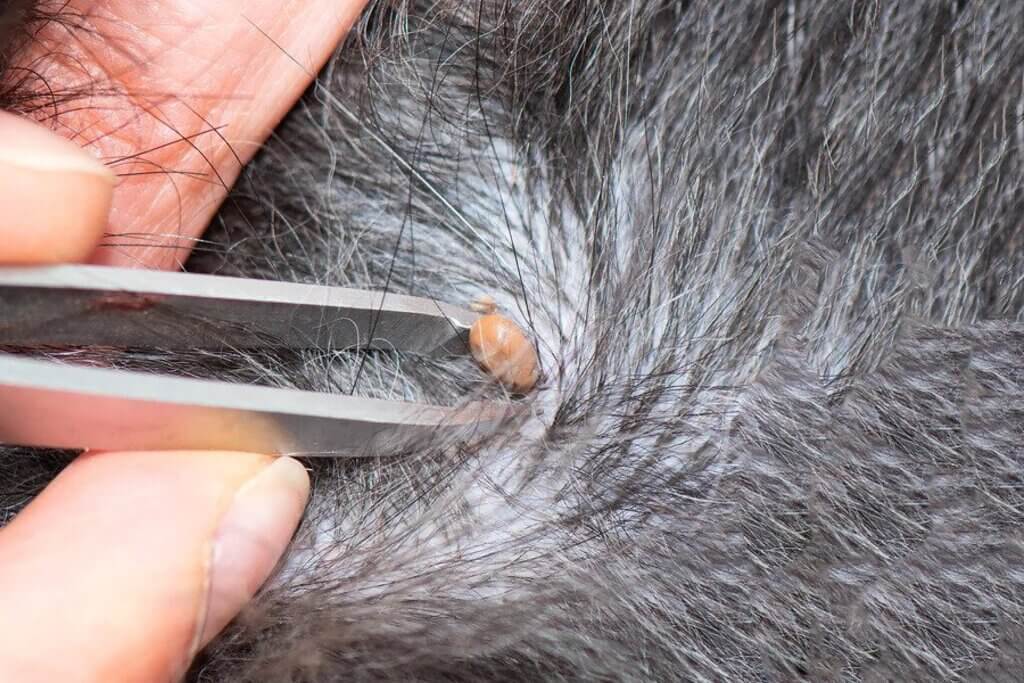
Is your dog behaving differently? There is a high possibility that there is a dead tick on the dog!
If your furry friend has all of the above signs, your dog might have ticks.
Whether dead or alive, ticks are always nasty and can make your dog sick.
But if you find a dried, dead tick on your puppy, don’t panic so much! Because this is more common than you might think!
Dogs are active animals, and they love to play outside. So when your dog is busy exploring surroundings or playing in the park, there are high chances that he/she will bring a tick on its body or hidden in its fur.
Yes, it’s true that dead ticks are less dangerous than live ticks, but still, ticks are ticks, and you have to remove them. Ticks are infectious as they contain contagious organisms. Research shows that “every year, thousands of animals are infected with ticks and other illnesses like Lyme disease, babesiosis, and ehrlichiosis.”
Today in this post, we’re going to tell you everything about dried dead tick on dog.
From how to find a dried dead tick to how to get a tick off a dog and afterward care, we’ve included everything!
So, whether you’re in doubt or just find a dried dead tick on your dog’s fur, this guide will help you. Let’s begin.
To be more accurate and confirmed, check whether your dog has these signs or not:
- Your dog has a mild or high-grade fever.
- If your dog is excessively nipping or licking at a particular spot.
- Your dog is constantly shaking his head
- Do you feel any kind of bump on your dog
What Is a Tick?

The tick is a grey-brown egg-shaped, blood-sucking external parasite that feeds on its host, including dogs and other species. They have eight legs (almost look like a spider) and can be found in sizes from about 1mm to 1cm long.
Ticks have four stages:
- Egg
- Larva
- nymph, and
- adult.
Among all the stages, the last three stages feed on blood.
At first, these tics may look smaller and tiny, but they become engorged and darker after they are fed blood.
The embedded tick on dog usually drops off its host and searches again for another place to molt and evolve into other stages: larvae and nymphs. They fall off and find a mate to reproduce and lay eggs. At last, they die and can get stuck in your pet’s skin or remain loose in its fur.
What Does a Dead Tick Look Like on a Dog?
As a dog owner, it’s crucial for you to know what does an embedded tick look like on a dog. People often get confused with tick or skin tag on dog. Sometimes people try to remove body tags, moles, and even nipples as they think it was a tick.
Dead ticks obviously look dried, skinny, and wrinkly. They may be flat or full of blood (engorged). This usually depends on how much they have eaten and how long they have been on the skin or after they died.
You can see the above pictures for reference to know- what embedded fully ticks on dogs look like. Try to find ticks in the least motion places, such as thick fur, head, ears, and folds under legs and even paws.
Here are some common types of ticks found in dogs:
Tick Diseases In Dogs

Ticks can be specific to certain areas and carry different diseases. Below is a list of the some of the most common tick-borne diseases:
Lyme Disease (Borrelia burgorfei)
- Tick Type: Deer tick or blacklegged tick (Ixodes scapularis)
- Most Often Found: Northeast and upper midwest US; now becoming endemic in western Pennsylvania and Pittsburg
If your canine has Lyme disease, he/she will show at least one of the below symptoms:
- Lameness (involuntary limping)
- Fever (increased temperature)
- Lethargy (sleepiness or sluggishness)
- General pain and discomfort
- Loss of appetite and weight loss
- Abdominal pain and diarrhea
Babesiosis (Babesia microti)
- Tick Type: Blacklegged tick (Ixodes scapularis)
- Most Often Found: Northeast and upper midwest
Erlichiosis (Erlichiosis canis)
- Tick Type: Lone star tick (Ambylomma americanum)
- Most Often Found: South-central and the eastern US
Anaplasmosis (Anaplasma phagocytophilium or Anaplasma platyu)
- Tick Type: Blacklegged or deer tick (Ixodes scapularis or Ixodes pacificus)
- Most Often Found: Northeast and upper midwest, Pacific coast.
Rocky Mountain Spotted Fever (Rickettsia rickettsii)
- Tick Type: American dog tick (Dermacentor variabilis), Rocky Mountain wood tick (Dermacentor andersonni), brown dog tick (Rhipicephalus sangunineus)
- Most Often Found: Arkansas, Delaware, Missouri, North Carolina, Oklahoma, and Tennessee
So, finally, if you spot a dried dead tick, the next question is how to remove it. Here’s how to do it:
How to Remove a Dried Dead Tick on Dog
The good thing about this process is that it is quite similar and easy to remove live ones! Also, dead ticks are less risky than live ones but still cause all kinds of superficial irritation and inflammation. That’s why it’s super important to remove them as soon as you find them.
Have you never removed a tick from a dog before? Don’t panic! Just follow these steps and methods that are tried-and-true, vet-recommended. With the help of these steps, you can remove ticks quickly and easily from your dog’s body.
Here’s what you’ll need:
- Gloves
- Thin, point-ended tweezers or a specialized tick removal tool
- Rubbing (isopropyl) alcohol or soap
- Paper towel
- Ziploc bag or small plastic container
Let’s move on to the steps to remove the embedded dog tick:
Step One: Find The Tick
Finding a tick is not that hard! Ticks can be present anywhere on your dog’s body but some of the favorite places for ticks to hide include around ears or under legs, or where there are lots of furs. They are usually found at hard-to-reach places, including the head, near the throats, chins/jawline area, and neck.
You can use a magnifying glass to locate and inspect the small tick.
Here is what exactly a tick looks like:
- Size & shape: it looks like a hard bump around 1 mm to 10 mm in size.
- Color: Brown or black
- Legs: 6 to 8 legs.
- Engorged size & color: Silver-white and in size, they look like a small grape.
Step Two: Remove The Tick
Once you locate the tick, it’s time to remove them.
Make sure you put gloves on; it’s very important!
Start by spreading the hair away from the tick and holding it with a good grip on the dog’s skin with your gloves. If the tick is located in the areas where there is alot of thick fur, you can take help from another friend/family member. They can help you hold the fur apart, and at the same time, you can remove the tick.
Always use a thin and pointed pair of tweezers (like these ones) and slowly hold the tick as close as possible to your dog’s skin. Now pull it upwards in a straight motion until the tick is completely detached from the skin. Look at the below picture for reference. Also, don’t worry if the tick head stuck in dog skin, as you can later remove it with the help of tweezers.
Step Three: Clean The Bite Site
This step is important because who knows what type of tick it is and what serious disease or disease-causing bacteria it might be carrying. So don’t ever forget to clean the area of the bite after the removal of the parasite.
So what can you use to clean the bite site?
You can use soap and water or isopropyl rubbing alcohol. First, clean the wound as well as the surrounding areas thoroughly. Do it properly until the area is cleaned.
Don’t forget to wash and clean the tweezers as well as your own hands properly after the entire tick removal process!
Note:
If the bite site looks a bit sore and red, apply antiseptic ointments like Neosporin. This will help soothe and disinfect the area.
Dried Dead Tick On Dog: What Not To Do
After reading the blog about tick on dog skin, you know what ticks are, the types of ticks, and how to remove them. But there are some things that you should be careful about.
Here are some things that you should not do or things to keep in mind :
- NEVER EVER try to remove ticks with your bare hands. You can use a tissue or paper towel.
- Always disinfect and wash your hands properly with soap and water after removing all the ticks from your dog’s body.
- NEVER squish or crush a tick. This can lead to a more severe infection in the dog’s blood.
- NEVER apply nail polish, vaseline, or repellents to the tick to suffocate or kill it. Doing this can make the tick vomit, and there will be a possibility of infection.
- NEVER try to burn the tick with a lighted cigarette or hot match.
- NEVER throw the tick directly into the garbage or sink. They can easily crawl back.
Bottom Line
So this is all about dried dead tick on dog.
If you find a live or dead tick on your beloved dog, don’t fret! Many people restrict their dogs from going and playing outside or with other dogs. Let your dog be a dog!
Ticks are common, and there are many ways to protect your doggo from ticks, including Herbal Flea And Tick Powder and Tick Shampoo. As we mentioned in the blog, whenever you find a dried dead tick on your dog’s fur, simply remove them. Don’t forget to follow all the tips and precautions that we mentioned above.
And if you think that your dog is behaving abnormally or seems unhealthy, please visit your vet without hesitation! They clarify all your doubts and provide your dog with the right treatment.
I hope this in-depth guide on dried up dead tick on dog has provided you with all the information you need. So, if you find this blog informative and helpful, please share it with your friends and family.
Also Read:











